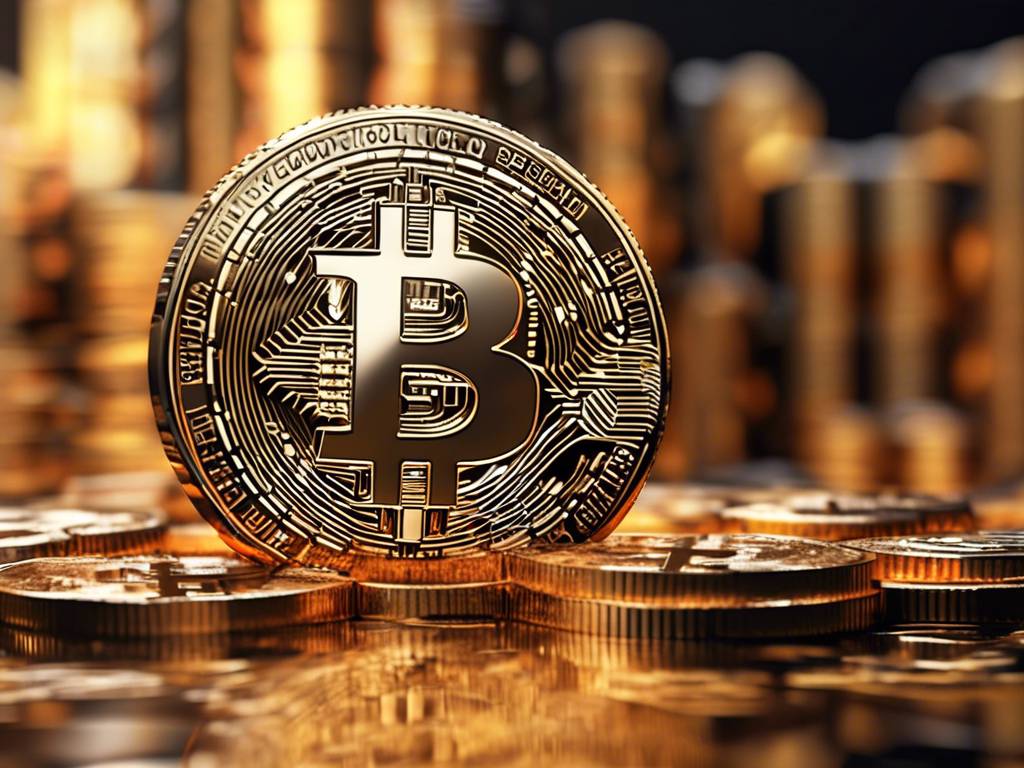Revolutionizing Ethereum: Vitalik Buterin’s Vision for Multidimensional Gas Pricing
As a crypto enthusiast, you are always on the lookout for groundbreaking developments in the blockchain space. Vitalik Buterin, Ethereum’s co-founder, has recently unveiled a game-changing initiative to revamp how transaction fees are assessed on the Ethereum network. This innovative concept, known as multidimensional gas pricing, could potentially revolutionize Ethereum’s transaction mechanisms, creating a more efficient and user-friendly experience for all participants.
The Need for Change: Vitalik Buterin’s Insights on Ethereum’s Pricing Mechanism
Historically, Ethereum has relied on gas as a unit of measurement to quantify the computational effort required for transactions and block processing. While this metric simplified transactions by combining various computational tasks into one standard unit, it also resulted in inefficiencies by failing to differentiate between different types of resource demands. Vitalik Buterin has criticized this traditional model for its oversimplification, highlighting the need for a more nuanced approach to pricing mechanisms.
- Multidimensional Gas Pricing:
- Introduces a more accurate allocation of blockchain resources
- Enhances transaction efficiency and cost-effectiveness
- Optimizes operational costs and network security
With the introduction of multidimensional gas pricing through Ethereum Improvement Proposal (EIP) 4844, Ethereum is poised for a significant evolution in its transaction processing capabilities. This new pricing model aims to address the shortcomings of the current system by providing a more comprehensive and granular assessment of resource requirements, leading to improved overall performance.
The Impact of Recent Upgrades: Enhancing Ethereum’s Scalability and Cost-Efficiency
The recent Dencun upgrade exemplifies Ethereum’s commitment to innovation and efficiency by integrating new features to reduce transaction costs and enhance scalability. By introducing “blobs” to optimize rollups, a secondary layer solution on the Ethereum network, the Dencun upgrade has successfully lowered transaction fees and increased transaction volume on rollups. Vitalik Buterin highlighted these improvements by stating that rollups have become 100 times cheaper, with transaction volume witnessing a significant spike.
- Key Benefits of Recent Upgrades:
- Improved scalability through optimized rollups
- Significant reduction in transaction fees
- Enhanced transaction volume and network efficiency
While these upgrades have led to a noticeable decrease in Ethereum’s median transaction fees, there are trade-offs to consider. The reduction in fees has impacted the total fees burned on the network, resulting in a shift from a deflationary to an inflationary currency. As Ethereum continues to evolve and adapt to market demands, striking a balance between transaction costs and network efficiency remains a critical priority.
Navigating Competitive Challenges: Solana’s Emergence as a Contender
Despite Ethereum’s innovative upgrades and improvements, the network faces stiff competition from Solana, a blockchain platform known for its low transaction costs and high throughput. Analysts have speculated that Solana could surpass Ethereum in transaction fees, signaling a potential shift in the competitive landscape within the blockchain ecosystem. Dan Smith, a senior research analyst, suggests that Solana’s growing economic value and transactional efficiency could position it as a formidable competitor to Ethereum in the near future.
- Competitive Landscape:
- Solana’s competitive edge in transaction costs
- Potential challenges posed by emerging blockchain networks
- Ethereum’s leadership in transaction fees and network activity
Despite the competitive pressures from Solana and other blockchain networks, Ethereum continues to lead in transaction fees and network activity. According to DefiLlama data, Ethereum generated over $2.34 million in transaction fees in the past 24 hours, outperforming Solana’s $1.19 million. This demonstrates Ethereum’s resilience and market dominance in the ever-evolving blockchain landscape.
Hot Take: Navigating the Future of Ethereum’s Transaction Pricing
As you delve deeper into the world of cryptocurrencies and blockchain technologies, it is essential to monitor the ongoing developments within the Ethereum ecosystem. Vitalik Buterin’s vision for multidimensional gas pricing represents a significant step towards enhancing Ethereum’s transaction mechanisms and network efficiency. By embracing innovation and adopting new pricing models, Ethereum is well-positioned to maintain its competitive edge and deliver a seamless user experience for crypto enthusiasts worldwide.





 By
By
 By
By


 By
By